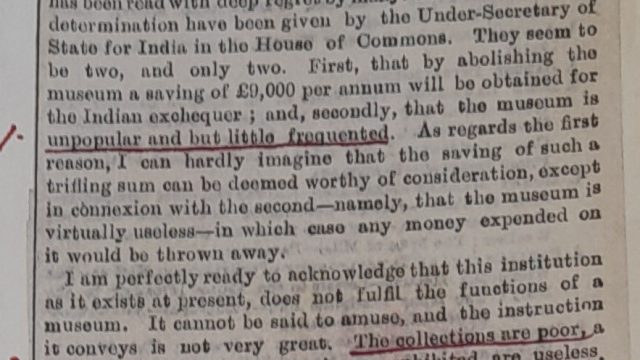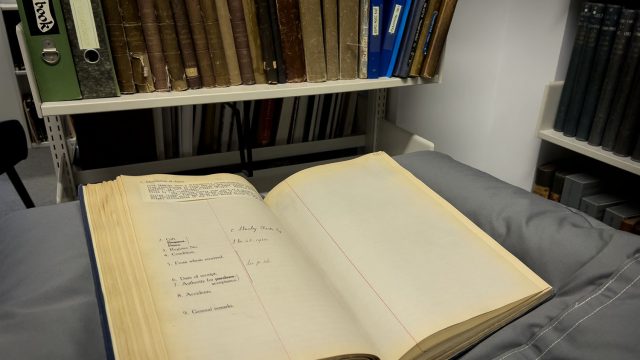Acts of Resistance: Photography, Feminisms and the Art of Photography is a new collaborative group exhibition organised with the South London Gallery and the V&A’s Parasol Foundation Women in Photography Project, which brings together works by artists and collectives to explore feminism and activism from an international and contemporary perspective. We asked several of the participating artists to nominate a book, poem, or activist which complements the exhibition themes and inspires change.
Acts of Resistance is at South London Gallery until 9 June 2024.
Sofia Karim

Sofia Karim is an architect, artist and activist based in London. She is the founder of Turbine Bagh, a joint artists’ movement against fascism and the rise of far-right nationalism in India and beyond. Featuring in the ‘Body As Battleground’ section of Acts of Resistance, her work protests human rights abuses across Bangladesh and India, and in solidarity with international struggles.
Karim would like to highlight James Baldwin’s talk The Artist’s Struggle For Integrity and states: “Just has to be heard. Now more than ever”.
Sheida Soleimani

Also featured in the ‘Body As Battleground’ section is Sheida Soleimani’s series ‘To Oblivion’, referencing the stories of women unlawfully captured or killed by the Iranian regime. Soleimani is an Iranian-American multimedia artist, activist, and professor. Her constructed photographs sit at the intersection of art and protest, with a focus on Iranian human-rights violations.
She has chosen Forugh Farrokhzad’s poem ‘Asir’ (Captive) and says: “In considering Iranian political history as well as Iranian feminist figures, one would be foolish to not mention poet Forough Farrokzhad. ‘Asir’ (Captive) was written in 1955, following the coup d’etat to overthrow the democratically elected leader, Mossadegh. When the new regime came into power in 1979 during the cultural revolution, her works were banned due to their discussions of female desire. Farrokzad has been credited as the figure who made it possible to write about her identity as a Persian woman – by no means was she the first female poet in Iran, but she is notable for not being afraid to write poems as an Iranian woman.”
Laia Abril

Laia Abril is a Catalan research-based artist whose work relates to socio politics and the history of women’s rights. Her series ‘On Abortion: And the Repercussions of Lack of Access’ is presented as part of the exhibition’s exploration into ‘Institutional Failure’. It forms part of a long-term study into the history of misogyny and its impact on women’s right to health and reproductive care.
Abril recommends Carmen Winant’s book A Brand New End: Survival and Its Pictures. “A powerful exploration of the domestic violence crisis in the United States, which brilliantly underscores the critical role of non-profit historical work in empowering survivors through resilience, and, in my opinion, a series that becomes an inflection point in Winant’s activist role.”
Wendy Red Star

Wendy Red Star is an Apsáalooke contemporary multimedia artist whose work confronts romantic notions of Native American culture and challenges the dominant narrative around settler/coloniser histories. Her piece Amnía (Echo), 2021, is placed within the ‘Revising Histories’ section of the exhibition and surfaces the erased identities of Apsáalooke women lost during the reallocation of land parcels in the 19th century.
She selects the book Crow Indian Photographer: The Work of Richard Throssel, edited by Peggy Albright. “Richard Throssel’s photographs hold immense significance for the Crow people, capturing invaluable moments of their daily lives, ceremonies, and interactions within the Crow Reservation. As a Cree photographer immersed in the Crow community, Throssel’s images not only serve as historical documents but also resonate with a deep sense of beauty and authenticity. His Canadian Cree heritage and adoption into the Crow Nation granted him unique access to intimate moments that non-Indigenous photographers could not experience. Through Throssel’s lens, Crow Women are portrayed with a sense of love, warmth, and familiarity, contrary to the typical stereotypes prevalent in early photography of Native peoples.”
Aida Silvestri

Aida Silvestri is an interdisciplinary artist and educator of Eritrean (East African) descent. She creates mixed media artworks that challenge the status quo of stigma, prejudice and social injustice concerning race, class, identity and health. Her piece ‘Untitled (Mutilation)’, 2023 is included in the ‘Body As Battleground’ section, drawing on the artist’s lived experience with FGM (female genital mutilation) to advocate for better healthcare and understanding.
Silvestri says: “I want to highlight a local women’s/art-activist group led by a wonderful woman called Leah Thorn, running a campaign called a:dress. The campaign is designed to raise awareness of fast fashion’s devastating contribution to the climate crisis and offer alternatives to the addictive purchasing of clothes.”
Carmen Winant

Carmen Winant is an American artist who uses archives and found material to explore the representation of feminist care networks. Her work The last safe abortion, 2023, forms part of the exhibition’s ‘Body As Battleground’ chapter, which examines systemic violence against women and the fight for bodily autonomy.
Winant has chosen to nominate Cameron Russell’s 2024 book How To Make Herself Agreeable to Everyone. “I read this in one long sitting; I couldn’t put it down and felt spoken to and through it. Cameron – my email pen pal whom I have never met in real life – is a supermodel and leading environmental activist in her industry who animates the struggle and the promise of bucking the power structures we are embedded in.”
Poulomi Basu

Poulomi Basu is an Indian artist whose work explores the relationship between bodies and systems of power. She has dedicated her life to advocating for women’s rights, particularly in the Global South. Presented in the exhibition chapter ‘Feminist Futures’, her work Sisters of the Moon offers a critical example of what happens when women are oppressed. The dystopian landscapes highlight how a lack of access to fundamental elements impacts women’s education, reproductive justice and climate change.
Basu has chosen to nominate Rokeya Sakhawat Hossain’s book Sultana’s Dream. “This 1905 short sci fi story written by a Muslim Bengali woman outlines a vision of an intersectional (eco) feminist future which is every bit as radical as what H. G Wells was churning out half a world away… but is less known and needs to be read by everyone!”
Sethembile Msezane

Sethembile Msezane is a South African interdisciplinary artist who uses photography, painting, performance, film, sculpture and installation to create commanding works heavy with spiritual and political symbolism. Her works, Chapungu – The Day Rhodes Fell University of Cape Town, 2015, and So Long a Letter – African Renaissance Monument, Senegal, 2016, are hung within the ‘Institutional Failure’ section, evidencing issues around colonial legacies, commemoration and African knowledge systems.
Msezane has selected Panashe Chigumadzi’s book, These Bones Will Rise Again. “‘Mapfupa angu achapfuka.’ My bones will rise again. These are words of the ancestral spirit medium Mbuya Nehanda uttered in the face of death for her spiritual and military leadership during the Ndebele-Shona uprisings of 1896 – 97 against Cecil John Rhodes. Panashe Chigumadzi, the author of the book, gives her readers an insight on the revolutions that have since occurred in the spirit of Nehanda shaping Zimbabwe to be what it is today. Chigumadzi reminds us that the discontent of spirits long gone never dies but transcends generations and borders, resonating in many including ‘little women’.”
Hannah Starkey

Hannah Starkey was born in Northern Ireland and lives and works in London. She has dedicated her working life to photographing and advocating for women. Her series ‘Principled and Revolutionary: Northern Ireland’s Peace Women’, 2023, presented in the exhibition chapter ‘Revising Histories’, features self-portraits of the women instrumental to activism and peace-building during and after The Troubles, a period of political and civil unrest in Northern Ireland.
Starkey recommends Iren Stehil’s photobook Libuna. “I came across this book at the beginning of my career and have loved it ever since. As my life rolls along I find myself looking at it from time to time, seeing it from different perspectives with age and experience. It’s a glimpse into the life of a woman called Libuna, living within the Roma community in Prague. Iren Stehli’s dedication to documenting Libuna’s life allows us to witness the various stages and challenges she experiences, from her youth to grandmotherhood, navigating love, family, and societal pressures. For me, revisiting ‘Libuna’ over time offers new insights and perspectives, reflecting the evolving nature of life and the depth of human experience. It is a book that resonates deeply in different ways depending on my own stage of life. It always leaves me with a lasting impression and prompting reflection on why I make photographs”.


